|
|
Air Force Units
| 485th |
| |
Ground Electronic Engineering Installation Agency
Roster |
|
| |
Air Defense Group
Greater Pittsburgh Airport, Pennsylvania
16 February, 1953 – 18 August, 1955
|
|
| |
Aircraft Control and Warning Group
Note: 1 July 1948, original designation of unit was 7402nd Tactical Control Group, United States Air Forces in Europe at Wiesbaden, Germany
Redesignated: 16 December 1948, 7402nd Aircraft Control and Warning Group
Relocated: 16 December 1948, Darmstadt, Germany
Activated: 10 June 1949, as 501st Aircraft Control and Warning Group, Zwingenberg, Germany
Personnel: Authorized: 18 Officers, 84 Enlisted; Actual: 30 June 1949, 19 Officers, 120 Enlisted
Located: July 1949, Landsberg, Germany
Mission: July 1949, To provide Surveillance and early warning service. Exercise command jurisdiction over all assigned and attached units in accordance with current and applicable USAF, EUCOM, and USAFE directives. Fulfill intelligence mission as outlined in USAFE regulations. Insure that all personnel assigned or attached meet the prescribed standards of training as set forth in existing regulations. Carry out all other directives or orders that may be issued by Headquarters, USAFE.
Subordinate to: October 1949, 2nd Air Division, Twelfth Air Force
Subordinate Units: 1949,
601st Aircraft Control and Warning Squadron
602nd Aircraft Control and Warning Squadron
603rd Aircraft Control and Warning Squadron
604th Aircraft Control and Warning Squadron
Personnel: 1951, 212 Officers, 1917 Enlisted and 2 civilians
Subordinate Units: 1951
601st Aircraft Control and Warning Squadron
602nd Aircraft Control and Warning Squadron
603rd Aircraft Control and Warning Squadron
604th Aircraft Control and Warning Squadron
807th Tactical Control Squadron
Commanders:
10 March 1949 - (?), 1st Lt. Richard A. Palmer
July 1949, Lt. Colonel Fred J. Collin
1951, Colonel Lee B. Coats
Note: 1951, Tactical Air Control Center established at Landsberg, Air Base
Exercises:
1949
Harvest Maneuver - October 1949
1951
Operation Blue Sky - July 1951
Mayflower
Ombrele - NATO Joint Exercise
|
| |
Air Defense Group
O’Hare International Airport, Illinois
16 February, 1953 – 18 August, 1955
|
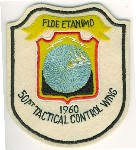 |
Tactical Control Wing
Activated: 1 July 1955, as Tactical Control Wing (Provisional)
Mission: to improve effectiveness of radar and Aircraft Control in 12th Air Force.
Redesignated: 18 December 1957,
Tactical Control Wing
Located: Landstuhl, Germany
Commanders:
Colonel Thomas S. Bond Jr.
Colonel Carl B. Lindstrand
Subordinate Units:
601st Aircraft Control and Warning, Rothwesten, Germany
602nd Aircraft Control and Warning, Giebelstadt, Germany
603rd Aircraft Control and Warning, Langerkopf, Germany
604th Aircraft Control and Warning Freising, Germany
615th Aircraft Control and Warning, Pruem, Germany
616th Aircraft Control and Warning, Ulm, Germany
619th Aircraft Control and Warning, Birkenfeld, Germany
807th Tactical Control Squadron, Landstuhl, Germany
Note: 526th Tactical Control Group was inactivated and Headquarters, 501st Tactical Control Group, was redesignated Headquarters, 501st Tactical Control Wing.
Equipment: 1957, MPS-7, AN/GPS-4, AN/MSQ-1, AN/MSQ-1A, AN/MPS-11, AN/MPS-16
Exercises:
1980
Bold Lancer
Alternate Air Control Center
Located: Birkenfeld
|
| |
Tactical Control Group
See Tactical Control Wing
Organized: 31 December 1945, Furstenfeldbruck, German
Mission: 1945, Provide Early Warning of the approach of unfriendly aircraft, provide Ground Control for Interceptor missions, and provide information and control for friendly aircraft.
Activated: 10 June 1949, Zwingenberg, Germany
Mission: to provide Aircraft Control and Warning and Tactical Air Control Systems for 12th Air Force area of responsibility.
Located: 1952, Landsberg Air Base, West Germany
Commanders:
1952, Colonel Lee H. Coats
1952, Colonel Robert C. Sexton
Exercises:
1949
Operation Harvest - Joint maneuvers with French Military forces.
1953
Nancy - Test of Joint 12th Air Force/French Tactical Control Systems
Snowball - Practice for Canadian units.
Monte Carlo - ground support missions
Power Play - test of Rhine River defense positions
Harvest Moon - ground support missions flown in conjunction with the Army
Coronet - National Air Defense Forces exercise
1954
Deadpan - Test of defenses against low flying aircraft
Web Site: Link 1; Link 2
|
|
| |
Air Defense Group
Youngstown Municipal Airport, Ohio
16 February, 1953 – 18 August, 1955
|
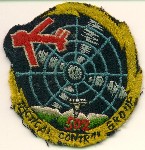 |
Tactical Control Group
Pope AFB, North Carolina
Mission: 1945/49, Engage in Tactical Operations or Defense Operations; provide Control and Direction for aircraft, and provide Early Warning of hostile Air Activity; develop doctrines for Tactical Air Operations, testing of equipment and techniques for use of equipment.
Note: 29 August 1950, 502nd Tactical Control Group attached to 6132nd Tactical Air Control Group
Note: 10 October 1950, 6132nd Tactical Air Control Group personnel and equipment assigned to 502nd Tactical Control Group.
Subordinate to: 5th Air Force, and direct support of its advanced Headquarters.
Deployed: Pusan, South Korea, 24 September 1950 through 3 October 1950
Relocated: Taegu, South Korea, 3 October 1950 through 11 October 1950
Relocated: Seoul, South Korea, 11 October 1950 through 20 December 1950.
Relocated: Taegu, South Korea---20 December 1950 through 15 June 1951
Relocated: Seoul, South Korea---15 June 1951 until the end on the war.
Subordinate Units:
605th TCS: 1950 through 1953
606th AC&WS: 1950 through 1953
607th AC&WS: 1950 through 1953
608th AC&WS: November 2, 1951 through 1953
6132nd AC&WS: 9 October 1950 through 2 November 1951
1st SBU (later Squadron): 27 September 1950 through 1 December 1950 and 6 September 1952 through 1953
Commander:
July 1950 - 18 February 1951, Colonel William P. McBride
18 February 1951 - 3 May 1952, Colonel Henry Rieva
3 May 1952 - 25 July 1952, Colonel Francis R Delaney
25 July 1952 - 15 June 1953, Colonel Ernest J. White, Jr.
15 June 1953 until the unit left Korea, Colonel Hugh C. Moore
Campaigns & Foreign Service Awards:
UN Offensive
CCF Intervention
First UN Counteroffensive
CCF Spring Offensive
UN Summer-Fall Offensive
Second Korean Winter
Korea, Summer-Fall 1952
Third Korean Winter
Korea, Summer 1953
Distinguished Unit Citation 3 November 1950 - 21 April 1951
Distinguished Unit Citation 1 May 1952 - 30 November 1952
Republic of Korea Presidential Unit Citation 16 September 1950 - 25 January 1951
Republic of Korea Presidential Unit Citation 25 January 1951 - 31 March 1953
Republic of Korea Presidential Unit Citation 1 October 1952 - 27 July 1953
Web Site: Link
Notes: "In order to permit the 3903d Squadron's detachments to return to their regular duty in the United States, the 502nd Tactical Control Group fed it's own personnel into the tactical air-direction posts (or "Tadpoles"), and in September 1951 took command of the three posts, one being assigned to each aircraft control & warning squadron." [note]
"Seeking to improve the equipment possessed by the Tactical Air-Direction posts, the Fifth Air Force secured two new and improved AN/MSQ-1 radar bomb-direction sets in October 1951." [note]
|
|
| |
Aircraft Control and Warning Group
Activated: 30 April, 1948, Roslyn, New York
Mission: 1948, To develop an Aircraft Control and Warning System to serve as link in overall system of Air Defense Command.
Subordinate Units: 1948
645th Aircraft Control and Warning Squadron
646th Aircraft Control and Warning Squadron
647th Aircraft Control and Warning Squadron
648th Aircraft Control and Warning Squadron
672nd Aircraft Control and Warning Squadron
Note: Intensive training program to provide enough crews for manning all radar sites proposed under Lashup II.
Inactivated: 6 February, 1952
Exercises:
Operation Lookout - From 10 to 15 September 1949
Website: Link
|
| |
Air Defense Group
Portland AFB, Oregon
16 February, 1953 – 18 August, 1955
|
|
| |
Tactical Control Group
|
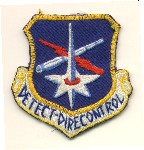 |
Tactical Air Control Group |
|
| |
Aircraft Control & Warning Group/Western Aircraft Control and Warning Group
Note: it may be necessary to look at the Group's Squadrons for a complete picture. Some history notations for the Group make it difficult to determine if the entry is for the Group itself or for one of its Squadrons. Some detachment histories are not clear as to what squadron the detachment was attached to, so there are listed under the Group.
Note: Originally Western Aircraft Control And Warning Group, 412th Army Air Force Base Unit.
Activated: 21 May 1947
at McChord AFB, Washington
Subordinate to: 4th Air Force
Mission: 21 May 1947, To train personnel, maintain and guard Control Centers and Radar Stations, and coordinate an utilize local Night Fighter Squadrons in training of teams and units.
Subordinate Units: 21 May 1947
634th Aircraft Control Squadron
635th Aircraft Control Squadron
636th Aircraft Control Squadron
637th Aircraft Control Squadron
Note: Units were activated with permanent station at McChord Field, Washington. The 636th Aircraft Control and Warning Squadron is temporarily stationed at Hamilton Field, California. The 637th Aircraft Control and Warning Squadron is temporarily stationed at Long Beach Municipal Airport, Long Beach, California.
Mission: 28 March 1948, To install, operate and maintain Air Defense Net in Seattle, Washington Area, (Operation Easter).
Note: June 1948, The 505th Aircraft Control and Warning Group supported the 531st Aircraft Control and Warning Group administrative and for training.
Mission: 29 June 1948, Act as Headquarters Northwestern Air Defense Sector (Provisional) for planning purposes only. Continuous training of the 505th Aircraft Control and Warning Group. Survey the Northwest area with a view towards establishing a permanent air defense system based on the best tactical sites, according to the follow priorities:
1. Air Defense Direction Center in the Puget Sound area.
2. Air Defense Direction Center in the Hanford-Pasco area.
3. Early Warning (System) West of the Cascade Mountains.
4. Early Warning (System) East of the Cascade Mountains.
5. Early Warning sites in the Cascades to augment (the above mentioned ADCC's and EW sites) in a Northerly direction.
Carry out continuous training of the 536th Aircraft Control and Warning Squadron in conjunction with the 325th Fighter Group
Note: July 1948, Colonel Slagt of the Washington Air National Gurad visited the Group in July, to find where he could place 3 radar units of the AN/TPS-1B type, which could augment and supplement the 505th Group's radar chain in the event of an emergency. He was restricted in siting by the fact that the sets had to be located near large cities for recruiting purposes. Suggested Aberdeen, Port Angeles and Bellingham (Washington), which conformed to Air National Guard two-fold requirements.
Note: July 1948, Transfer of equipment from the McChord ADCC to Silver Lake was accomplished. McChord ADCC reverted back to a training status.
Mission: 20 September 1948, Provide continuous training for the 505th Aircraft Control and Warning Group. Maintenance of security in a standby status, and the manning and continued operation of the Air Defense installations in the Northwest area, including the ADCC at Silver Lake (Washington), the ADCC's at Pasco (Washington) and Arlington (Washington); the early warning radar sites at Neah Bay (Washington), Spokane (Washington) and Fort Stevens (Oregon); and the radio relay installations at Bohokus Peak, Blyn Mountain and Capitol Peak (Washington) (AFHRA B077, Pg. 13). Establish, maintain and operate an Air Surveillance system for the defense of the Los Alamos-Sandia area in New Mexico. Install an AN/CPS-5 radar set at Fort Stevens, Oregon, and Moses Lake, Washington, Cape Flattery, Washington, Spokane, Washington. Arrange for a possible installation of an Air National Guard AN/CPS-5 radar set in the vicinity of Bellingham, Washington. Provide continuous training for the detachment of the 637th Aircraft Control and Warning Squadron stationed at Half Moon Bay, California.
Note: on 27 September 1948, the 505th was relieved
of the support of the 531st Aircraft Control and Warning Group.
Note: 1948, Chain of Command 634th, 635th, 636th and 637 Aircraft Control and Warning Squadrons, and 11th Radar Calibration Squadron, report to 505th Aircraft Control and Warning Group, which reports to Fourth Air Force, Air Defense Command, Continental Air Command, United States Air Force.
Note: 11 September 1948, all squadrons of the 505th Group were informed that effective 14 September 1948, the hours of operation would be increased to 0700 to 2200 hours daily. Additional personnel were promised to perform this additional duty, but never materialized.
Note: 2 November 1948, Personnel sent TDY for 90 days to support Project Vittles, was changed to 180 days, and then to Permanent Change of Station (PCS). This required the Group to start all over training recruits right out of basic training to perform the necessary jobs within the Group.
Note: 6 December 1948, the531st Group was to take control of 505th Group Detachments at Neah Bay, Bohokus Peak and Pacific Beach.
Note: 9 December 1948, due to the critical gasoline shortage, it became necessary to control the dispatching of all vehicles.
Note: 22 December 1948, request submitted to move the AN/CPS-4 from Fort Stevens to Moses Lake, and the AN/TPS-10 from Neah Bay to Pacific Beach.
Subordinate Units: As of 31 December 1948
634th AC&WS, Silver Lake, Washington
635th AC&WS, McChord AFB, Washington
636th AC&WS, Kirkland AFB, New Mexico
637th AC&WS, McChord AFB, Washington
11th Radar Calibration Squadron, McChord AFB, Washington
Notes: 531st AC&W Group attached for administration and training. 505th AC&W Group acted as Headquarters Northwestern Air Defense Sector (Provisional). Responsible for security and maintenance of West Coast Control Centers; Opening, manning and operation of Air Defense Control Center, Everett, Washington; continuous planning for Defense of Los Alamos/Sandia, New Mexico area; and operation and maintenance of McChord Field Terminal of the Fourth Air Force Radio Training Net. Further, Group was charges with preparing for establishment of permanent Air Defense System in Northwest Area. Equipped with AN/CPS-5 Radar System, AN/CPS-1 Radar System, AN/CPS-4 Radar System, AN/CPS-6 Radar System, AN/TPS-1B Radar System, AN/TPS-10A Radar System, AN/APQ-13 Radar System, AN/CPX-2 Radar System, SCR-634 Very High Frequency Direction Finding Radios, and AN/TRC-4 Frequency Modulated Radios, SCR-188 High Frequency and Very High Frequency radios, SCR-573 Radios, SCR-574 Radios, SCR-624 Radios, AN/VRC-1 Frequency Modulated Radios and BN-2 Radios. Equipped with B-25 aircraft utilized in radar calibration. Participated in Moby Dick II Exercise and November Fleet Exercises in the Pacific, 1948, (NOVFLEXPAC-48).
Subordinate to: 1 January 1949, 62nd Troop Carrier Wing, McChord Air Force Base, Tacoma, Washington.
Note: 1949, B-25 aircraft described as inadequate for Radar Calibration purposes.
Note: Unidentified "Flying Disc" sighted over Hanford Works, Richland, Washington
Reorganized: 1949, under Directorate System.
Subordinate Units: as of 8 March 1949,
634th AC&WS, Silver Lake, Washington
635th AC&WS, Paine Field, Everett, Washinton
Detachment A, Capital Peak, Washington
Detachment B, Paine Field, Washington
Detachment D, Pacific Beach, Washington
Detachment E,
Neah Bay, Washington
Detachment F, Blyn Mountain, Sequim, Washington
636th AC&WS, Kirkland AFB, New Mexico
637th AC&WS, Moses Lake, Air Force Base, Washington
Detachment G, Half Moon Bay, California
Detachment H, Spokane, Washington
Detachment L,
Berkeley, California
626th AC&WS, McChord AFB, Tacoma Washington
(for administration and operational training)
11th Radar Calibration Squadron, McChord AFB, Washington
Note: 26 April 1949, 626th Squadron Deactivated
Note: 1 May 1949, Personnel of deactivated 626th Aircraft Control and Warning Squadron transferred to 505th Aircraft Control and Warning Group.
Relocated: 26 September 1949, Silver Lake, Everett, Washington
Mission: March 1949, Is responsible for training the 634th, 635th, 637th Aircraft Control and Warning Squadron, and such other Aircraft Control and Warning Units as may be assigned by higher headquarters for training, and to perform efficiently the following specific functions with forces and facilities available:
a. Provide the ground control necessary for the utilization of a given air space for air defense.
b. Install, maintain and operate the information and warning service necessary to provide that control.
c. Coordinate with other governmental agencies in carrying out the above.
d. Perform such special missions as the Commanding General, Fourth Air Force, may direct.
Subordinate Units: as of 1949
634th AC&WS, Silver Lake, Washington
635th AC&WS, Paine Field, Everett, Washinton
637th AC&WS, Moses Lake, Air Force Base, Washington
Note: November 1949, a constant flow of new personnel were being sent to the unit in anticipation of the activation of new squadrons.
Note: November 1949, A request was made to Fourth Air Force for the acquisition of Fort Stevens, Oregon for the installation of a rdar site. As of this date a definite decision has not been made. (AHFRA 0722 pg 1275)
Subordinate Units: as of December 1949
634th AC&WS, Silver Lake, Washington
635th AC&WS, Paine Field, Everett, Washinton
636th AC&WS, McChord Air Force Base, Tacoma, Washington
637th AC&WS, Moses Lake, Air Force Base, Washington
Note: 8 December 1949, 636th Squadron relieved from assignment from 12th Air Force and reassigned to Fourth Air Force, Hamilton Air Force Base, Hamilton, California.
Note: December 1949 instructions were issued that all radars be oriented to "True North" versus "Magnetic North."
Note: End of December1949, two WAFS reported to the Group for duty. Having no authorization for WAFS, and no accomidations for the WAFS, the Group transferred them to the 325th Fighter Wing, Moses Lake Air Force Base, Washington.
Note: December 1949, Up until December of 1949, the Group was using wholly radar equipment of the transportable type. With the reorganization of the 636th Aircraft Control and Warning Squadron, the group is receiving its first AN/CPS-6B (radar set), a permanently installed type early warning set with built-in height finding equipment. Heretofore, this Group has had to utilize two (2) different sets to accomplish this.
Relocated: 25 June 1951, McChord AFB, Washington, As per Department of the Air Force Movement Directive.
Mission: 1 July 1951, To exercise command jurisdiction over assigned squadrons for all administrative and training functions; and to supervise their training in the execution of operational directives and procedures issued by this headquarters (25th Air Division) for the accomplishment of the tactical mission of this command.
Personnel: July 1951, 24 Officers, 58 Enlisted and 4 Civilians.
Personnel: August 1951, 24 Officers, 52 Enlisted and 5 Civilians.
Commanders:
21 May 1947 - 16 September 1948, Lt. Colonel Arthur R. Kingham
16 September 1948 - 9 February 1949, Lt. Colonel Peter D. Green
9 February 1949, Major Joseph O. Ducheane
23 February 1949, Colonel John E. Bodle
July 1949, Colonel James R. McWitt
1951, Lt. Colonel John F. Dudney
Inactivated: 6 February, 1952
Equipment:
1950, AN/CPX-1
1950, AN/CPX-2
1950, AN/GPX-3
April 1949, AN/CPS-1 Serial No. 7, from the 635th AC&W Squadron.
July 1951 CPS-5D
Note: 1948, Due to security concerns, Aircraft Control and Warning Detachments were not allowed to use Aircraft Control and Warning on correspondence.
Headquarters
Located: 1947, McChord Field, Washington
Mission: 17 June 1947, The 505th Aircraft Control and Warning Group Headquarters will be responsible for the training of units assigned thereto, and such other Aircraft Control and Warning units as may be assigned to this Air Force for training to perform efficiently with forces and facilities available the following specific functions: a. Provisions for ground control necessary for the utilization of a given air space for defense. b. Installation, maintenance, and operation of information and warning services necessary to provide that control. c. Coordination with other governmental agencies in carring out the above. d. Such special missions as the Commanding General, Fourth Air Force, may direct.
Note: Personnel were transferred in grade from Squadron A of the 412th AAF Base Unit to Headquarters, 505th Aircraft Control and Warning Group.
Detachment Q
Mission: Weather Detachment. Gives service via teletype to the units of the Group. It consists of four (4) airmen attached to the McChord Air Force Base Flight Service, ans is a unit that renders invaluable service both to the flying arm and the radar sections of the division and group.
Blyn Mountain/Detachment P
Moon Island
Note: September 1948, A survey completed on 10 September 1948. A radar site could be set up at the Moon Island Airport at no expense to the government for rent; but no buildings available thereat. Commercial power nearby; water within 3,500 feet of proposed site of AN/TPS-1B. Located 3 miles from Hoquiam, Washington.
Pacific Beach
Note: September 1948, A survey of this site was made on 13 and 14 September 1948. Pacific Beach is located 18 miles north of the Grays Harbor entrance, 99 miles from McChord AFB. It was a wartime site of a Naval anti-aircraft training center; abandoned by the Navy. It has a desirable location for an AN/TPS-1B radar set.
Paine Field
Note: September 1948, This site considered as a favorable location for the 635th Squadron Headquarters. Such a movement was requested from higher headquarters. Also considered as excellent site for the ADCC presently at Arlington, Washington.
Equipment:
December 1948, AN/CPS-5, Construction started 1 December; Operational January 1949.
Point Brown
Note: September 1948, Survey completed on 10 September 1948. A former Coast Artillery emplacement was located thereat, and there are existing facilities, including water supply. The site located 23 miles from Hoquiam, 5 miles of which is very poor road.
Westport
Note: September 1948, This site was surveyed on 22 July 1948. Located on low, flat, sandy land. A Coast Guard and Radio Compass in the area, but no government land available for a radar site. This location suitable for all types of radar equipment, and would afford coverage in all directions except in the direction of the Olympic Mountains.
Note: Moon Island, Point Brown, Pacific Beach and Westport were all surveyed for a site to fill the gap between the Fort Stevens and Neah Bay early warning stations. The fact that low flying aircraft could sneak through the Washington coastal radar chain was found in the Moby Dick II maneuver, and the new site was to become an early warning radar site to augment the two mentioned sites. As it later turned out, Pacific Beach was chosen because of its desirability and half-way location between Neah Bay and Fort Stevens.
Exercises:
1948
Moby Dick II - Joint Navy/Air Force Exercise conducted under the provisions of the joint Army/Navy/Air Force Interim Defense Plan, Northwest Sector, Pacific Coastal Frontier. The maneuver utilized existing facilities in defense of the area against an attack of enemy surface and air forces. Poor results due to acute gasoline shortage.
1949
Drummer Boy 4 - 14 November 1949, To train Fighter And Aircraft control and Warning Units in Air Defense Operations. To test and evaluate the overall effectiveness of the planned air defense system, organization and procedures. To test the effectiveness of plans for control for identification purposes of military and civil air traffic in the Northwest area. To evaluate the effectiveness of the radar performance deployment, and the communications network.
Map of 505th Group Units as of 1949
Radar Coverage as of 1949
Radar Units of 505th Group as of October 1949
|
| |
Aircraft Control & Warning Squadron
McChord AFB, Washington
May, 1947
|
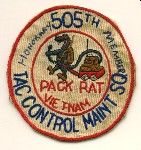 |
Tactical Control Maintenance Squadron
Shaw AFB, South Carolina
Web Link
|
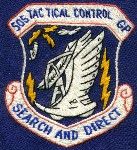 |
Tactical Control Group
Notes: Originally designated 6250th TASG (PROV).
Activated: 1 August 1965, as 6250th Tactical Air Support Group (Provisional)
Redesignated: 8 November 1965, 505th Tactical Control Group
Tactical Air Control Center
Note: 1967Participated in Project Commando Indian (Establishment of Air Traffic Control Facility for Republic of Vietnam).
Note: 1967, Participated in Project Pacer Dog (Standardization and Simplification of radar network in Southeast Asia).
Note: 1968, Participated in Project Commando Indian and Pacer Dog Program.
Located: 1968/1969, Tan Son Nhut AB, Saigon, Republic of Vietnam
Mission: 1969, To provide electronic ground environment system for providing Aircraft Control and Warning, Offensive, Defensive, and Air Support Operations, responsible for administrative and logistic support to assigned units supporting Military Assistance Program (MAP) in Vietnam and Thailand.
Note: 1969, Participated in Project Cross Talk at Tyndall AIr Force Base, Florida
Note: 1969, Participated in Commando Hunt Campaign (Integrated interdiction operation in Laos).
Subordinate Units:
619th Tactical Control Squadron
620th Tactical Control Squadron
621st Tactical Control Squadron
Mission: 1970, To provide 7th Air Force with Electronic Ground Communications system to sustain aircraft, to provide supervision of Air Control and Warning System, to provide radar services for Tactical Units, and to provide administrative and logistic support for its assigned units supporting the Military Assistance Program (MAP), in Vietnam and Thailand.
Note: 1970, Participated in Projects Peace Book and Commando Radiant, Project Corona Harvest.
Note: 1971, Participated in Project Corona Harvest.
Commanders:
1969, Delbert R. Smith
(?) - 7 April 1969, Colonel Emanuel A. Pelaez
7 April 1969 - (?), Colonel Lewis R. Smith
Colonel William P. Lehman
Web Link
|
| 506th |
| |
Tactical Control Group
Located: 1949, March Air Force Base, California
Note: February 1949, Palos Verdes and La Jolla, California Detachments of the 505th Aircraft Control and Warning Group, turned over to 506th Tactical Control Group
Equipment: May 1949, AN/CPS-4, later transferred to the 505th AC&W Group
Deactivated: 1949 (AFHRA B0722, pg 535)
Detachment
Located: February 1949, Palos Verdes, California
Detachment
Located: February 1949, La Jolla, California
|
|
| |
Tactical Air Control Wing/Air Control Wing
Located: 1988, Shaw Air Force Base, South Carolina
Mission: To administer and maintain network of organizations, equipment, and personnel comprising Tactical Air Control System.
Subordinate Units:
72nd Tactical Air Control Flight, inactivated
Awards: 29 August 1989, Air Force Outstanding Unit Award
Note: 1989, there was start-up of Wing supported radar site in the Bahamas
Mission: 1991, Provide capability to plan, direct, and control air operations that enables Tactical Air Support, Area Air Defense, ad Airspace Control in area of operation to coordinate and manage Joint Operations with component forces of other services. Provide Air Force Commander single integrated system with controlled air missions, including counter-air, air interdiction, reconnaissance, tactical airlift and special operations.
Note: 1991, Tactical Air Command removed term "Tactical" from unit designations.
Commanders:
Colonel James H. Martin
1985, Colonel Richard G. Rhyne
1989, Colonel Gene L. Juve
Colonel Thomas A. Owens
Colonel James C. Wray
Inactivated: 12 June 1992, as Tactical Air Control Wing
Activated: 12 June 1992, As Air Control Wing
Detachment 1
Located: Fort Bragg, North Carolina
Commanders:
(?) - 1984, Colonel Ross E. Peeler
1984 - (?), Colonel Richard O. Troy
18 July 1988 - (?), Colonel James R. Young II
Deployments:
Elf One
Counter narcotics Radar Operations 1 December 1990
Exercises:
1975
Sea Baron IV
Sea Baron V
Coronet Command
US Army FTX Exercises
1976
William Tell 76
Brave Shield XV - Readiness Command Training Exercise
1979
Comptuex 3-79, Joint Air Force/Navy Maritime Exercise
1980
Elf-1 - Deployment of personnel to Saudi Arabia
William Tell 80 - Exercise to test all phases of Air Defense in a realistic live fire environment.
Thunderhog II - a large scale exercise held in the Myrtle Beach/Georgetown area of South Carolina
Gallant Knight 81 - a Rapid Deployment Joint Task Force Command Post exercise
Bright Star 81
1981
Border Star 81 - Readiness exercise
Brim Frost 81 - To provide a simulated combat environment to train selected Army, Air Force and Navy units in Joint Tactics, techniques and procedures in an Arctic environment.
Camo Flag
Crown Baron - 9th Air Force training exercise
Elf-1 - Deployment of personnel to Saudi Arabia
Green Flag 81-3
Maple Flag VII - Continuing US/Canadian realistic combat training exercise
Navex 1-81 Joint Service Training with the navy and Marine Corps
Quick Thrust 2-81
Red Flag 81-2 - To fuse together existing Tactical Resources under a control manager to provide continuous combat training for Tactical resources in a realistic environment.
Solid Shield 81 - Joint Chiefs of Staff directed Joint training exercise
1982
Gallant Eagle 82
Gallant Knight 82
Elf-One
1983
Brim Frost 83
Coronet Thunder
Demon Dare 83-1
Demon Dare 83-2
Desert Raider 83-4
Desert Steel II
Desert Sting 83-6
Desert Thunder 83
Eagle Thrust
Elf-One
Gallant Knight 83
Highland thrust 83-5
Leapfest 83
Maple Flag XI
Poker Buff
Quick Frag 83-2
Sea Lion 83-2
Solid Shield 83
Solid Shield 83
War Week III
1984
Air Warrior 84-7
Blue Flag 84-3
Bold Venture
Casus Belli
Checkered Flag
Coronet South
Crown 84-7
Desert Radar II
Devil Strike XXI
Eagle Fury
Eagle Talon
Focus Lens 84
Gallant Eagle 84
Golden Victory III
Golden Victory IV
Logex 84
Mojave Mace 84
Poker Buff
Quick Force 84-3
Quick Force 84-5
Quick thrust
Quick Thunder 84-3
Quick Thunder 84-6
Quick Thunder 84-8
Quick Thunder 85-1
Ready Eagle II
Reforger
Roadrunner 1-84
1985
Coronet Stroke
Checkered Flag
Air Warrior
Quick Thunder
Blue Flag
Solid Shield
Bright Star
Poker Buff
1986
Coronet Stroke 1-87
1988
Springleap 88
Caber Dragon
Gallant Knight
Gallant Eagle
Reforger
Golden Saber XV
Team Spirit 88
Ocean Venture 88
Air Warrior
Air Warrior II
1989
Coronet Assist, Drug Interdiction Operations
Coronet Stroke 89
Air Warrior
89-5
Air Warrior II 89-3
Warfighter 89-3
1990
Operation Just Cause - Began in Panama during December 1989
Operation Desert Shield - in Persian Gulf Area of responsibility from August through December 1990.
Crown TACS 90-1 25 - 31 January 1990
Crown TACS 90-2 20 February 1990
Crown TACS 90-3 14 - 16 March 1990
Crown TACS 90-4 21 -22 May 1990
Red Flag 90-2
Air Warrior II (90-3)
Air Warrior 90-7
Joint Systems Training Exercise 90-2
Switftcom 90
Tiger Thrust Deployment to England AFB, Louisiana
Internal Look 90-1
1991
Air Warrior
Coronet Cobra
Desert Flag (renamed from Red Flag)
Desert Shield
Desert Storm
|
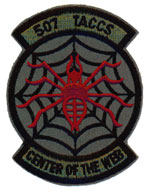
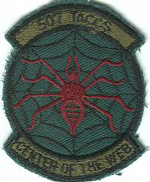
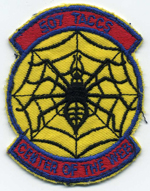
|
Tactical Control Squadron
Shaw AFB, South Carolina
Mission: Tactical Air Control Center
Exercises:
1991
Desert Shield
Desert Storm
|
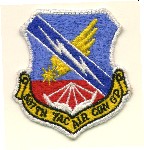 |
Tactical Control Group/Tactical Air Control Group
Activated: 2 September 1950, at Pope Air Force Base, Fort Bragg, North Carolina
Located: Shaw Air Force Base, South Carolina
Mission: 1950, To train personnel for radar units, to furnish personnel and equipment for United States Air Force Board Projects, and furnish demonstration teams to further air/ground tactics and training.
Reorganized: 5 March 1951 , led to activation of 729th Aircraft Control and Warning Squadron.
Subordinate Units: as of 1953
726th Tactical Control Squadron
727th Aircraft Control and Warning Squadron
728th Aircraft Control and Warning Squadron
729th Aircraft Control and Warning Squadron
Mission: 1955, To engage in Tactical operations and Defense operations as directed by 9th Air Force.
Redesignated: 1 October 1957, 6122nd Aircraft Control And Warning Group, Osan Air Base, Korea.
Notes: In September 1961, the first permanent USAF unit, the 507th Tactical Control Group from Shaw Air Force Base South Carolina deployed sixty-seven officers and airmen to Tan Son Nhut to install radars and began monitoring air traffic and training South Vietnamese to operate and service the equipment. This organization formed the nucleus of what became a tactical air control system for South Vietnamese and American aircraft.
Reorganized: 1969,
Subordinate Units as of: 1969
4462nd Tactical Air Control Squadron
4465th Tactical Control Squadron
728th Tactical Control Support Squadron
729th Tactical Control Squadron
71st Tactical Control Flight
72nd Tactical Control Flight
73rd Tactical Control Flight
74th Tactical Control Flight
Mission: 1974, Responsible for organization and command of all units assigned to TActical Air Control System for any contingency or exercise.
Subordinate Units as of: 1974
726th Tactical Control Squadron, Homestead Air Force Base, Florida
728th Tactical Control Squadron, Shaw Air Force Base
729th Tactical Control Squadron, MacDill Air Force Base, Florida
730th Tactical Control Squadron, Duke Field, Florida
71st Tactical Control Flight, MacDill Air Force Base
72nd Tactical Control Flight, Robins Air Force Base, Georgia
73rd Tactical Control Flight, Myrtle Beach, South Carolina
74th Tactical Control Flight, Pope Air Force Base
75th Tactical Control Flight, Eglin Air Force Base, Florida
Note: The 507th had been a Tactical Control Group but, neither its old name nor mission statement reflected the air arm it had gained during the first quarter of 1974.
Note: 1977: Tactical Air Control System (TACS)/Tactical Air Defense system (TADS), a computer system designed to command and control tactical Air Forces by identifying friendly and enemy aircraft, was field tested in Exercise Solid Shield 77.
Subordinate units as of 1977:
21st Tactical Air Support Squadron
682nd Direct Air Support Center Squadron
703rd Tactical Air Support Squadron
726th Tactical Control Squadron
729th Tactical Control Squadron
71st Tactical Control Flight
72nd Tactical Control Flight
73rd Tactical Control Flight
74th Tactical Control Flight
75th Tactical Control Flight
Notes: We were still changing names every other few months after Desert Shield/Desert Storm and were doing so when I retired in 1995. We split up into two or three organizations one and recombined. As 9th AF was limited to a Commander and staff of 100 in the Tactical Air Command reorganization and name change, we were 9th AF "below the line. We worked very close with the 682nd ASOC at Shaw and the flying units in local as well as 9AF Fwd (forward) in the Middle East. Our forward mission never stopped after ODS and continued as Desert Calm/Southern Watch and God knows how many other names. (David Pate)
Commander:
2 September 1950 - 8 October 1951 Colonel William H. Schwartz
8 October 1951 - (?) Colonel Leslie C. Heartz
1955, Colonel Henry Riera
1967, Colonel Harry L. Downing Jr.
1969, Colonel Francis J. Vetort
(?) - (?) Colonel Paul L. Park
1971, Colonel Robert C. Kerr
(?) - 1982, Colonel Keith B. Connolly
1982 - (?) Colonel Henry M. Yochum II
Equipment: AN/TPS-43E; AN/TPS-1C; AN/TPS-10, 1951; AN/MSQ-1, 1951; 1970 AN/TPS-43
Exercises:
1950
Operation Turn-in
1951
Southern Pine - 13 - 27 August 1951
Long Horn
1952
Southern Pine
Snow Fall
Long Horn
1953
Operation Georgia Cracker
1954
Operation Check Point - Air Defense exercise
Run In
Operation Bluebolt
1955
Blue bold - Joint Army/Air Force Exercise
Follow Me - Joint Army/Air Force Exercise
Early Spring
1956
Operation Dragonfly
Sagebrush
1957
Operation Blue Blade - formation of Flexible Composite Air Strike Force
Power Pack - Test of 19th Air Force Mobility Plan)
Sun Run
Trap Line - Command Post Exercise
1967
Coronet Trumpet II
Gamecock V
Lorraine
Deep Furrow 1-67
High Heels 67
Project Moon Dune Test
Frontier Assault - Alaskan Command Joint Combined field training exercise
Gamecock IV
Cashew Tee III
Blue Chip IX
Clove Hitch III
Normandy -Field Training Exercise
1968
Fort Bragg Fire Power Demonstration
Guardstrike II
Indian Tow Gap, Fire power demonstration
Deep Furrow 68
Comex 1-69
- Joint Communications Exercise
Boldshot/Brimfire 1-69
Armor School Command Post Exercise, Fort Knox, Kentucky
Hammerstrike 1-69
Brass Strike III
Linebaceker -
82nd Airborne Division Field Training
Coronet Trumpet IV
Gamecock VII
1969
Aloud Foxtrot
Boldshot/Brimfire 2-69
Acid Test
Boldshot/Brimfire 3-69/4-69
82nd Airborne Division Field Training Exercise
Carentan
Brass Strike IV
Coronet Trumpet V
Exotic Dancer II
Cornet Bare
Cornet Organ
Cabaret Ahmed
Brass Strike V
1970
Coronet Organ III
Heavy Bare
Cabal Assault 9-70
Aloud India
1971
Aloud Juliet
Boldshot/Brimfire 1-71
Boldshot/Brimfire 4-71
Boldshot/Brimfire 5-71
Cabaret Ahmed
Brass Strike VII
Coronet Organ IV
Exotic Dancer IV
High Heels
1972
Boldshot/Brimfire 2-72
Brave Shield III - A Joint Army-Air Force exercise conducted by US Readiness Command
Brass Key I - A Joint Tactical firepower demonstration
Brass Strike VIII
Mystic Mission
Exotic Dancer V
Game Cork IX
Mystic Mission Stage B
1973
Exotic Dancer VI
Deep Furrow 73 - NATO Training Exercise
Gallant hand 73
Coronet Ace
Coronet Organ VII
Sentry Builder - Air National Guard Exercise
Whispering Papa
Aloud Papa
1974
Brave Shield IX - JCS Exercise
1975
Gallant Shield 75, and Solid Shield 75
1976
Cope Thunder
Cope Diamond
Cope Jade Charlie
Jack Frost 76
Bold Eagle 76
Solid Shield 76
Red Eagle 1
1977
Red Flag 77-6
Red Flag 77-7
Solid Shield 77
1982
War Week 1 - Designed to emphasize the Tactical phase of the Wing's training.
Detachment 1
1969
Detachment 3
1969
|
| |
Command and Control Group
Shaw AFB, South Carolina
31 October, 1958
|
| |
CCLG
Shaw AFB, South Carolina
1 July 1961
|
| |
Detachment 1, Tactical Control Group
MacDill AFB, Florida
September, 1965
Roster
Lineage by Patrick Madden
Chain of Command and miscellaneous Patches
|
| |
Tactical Air Control Center Squadron
Deployments: 1991, Desert Shield/Desert Storm
|
|
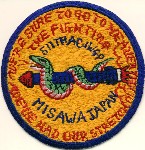 |
Aircraft Control & Warning Group
Note: it may be necessary to look at the Group's Squadrons for a complete picture. Some history notations for the Group make it difficult to determine if the entry is for the Group itself or for one of its Squadrons.
Activated: 25 August 1951
Reorganized: August 1951, the 613th Aircraft Control and Warning Squadron was reorganized into the 511th AC&W Group.
Mission: October 1951, Maintain a state of combat readiness of men and equipment to provide maximum effective aircraft control and warning in the Northern Air Defense Area. Maintain maximum continuous operational efficiency at all signal installations with minimum time lost for maintenance. Maintain maximum practicable back-up equipment at all signal installation. Insure that all aircraft flying in this area are accurately plotted and identified, and that such plots are properly relayed. Insure maximum effective control of all friendly aircraft that are airborne for purpose of interception. Maintain ground to air VHF communication at each EW site and TCC. Provide VHF/DF and secondary navigational side. Maintain Misawa ADCC in accordance with existing instruction. Provide for the implementation of passive air defense measures in the Northern Air Defense Area as directed by pertinent operations instructions. Maintain the 848th AC&W Squadron at Chitose Auxiliary Air Base for the purposes of administrative, logistical and operational control of all AC&W activities on Hokkaido. Conduct periodic tests on all AC&W facilities in this area and participate in all defense tests conducted by this headquarters. Insure that adequate security is maintained at all signal installations. Provide maximum support for ground defense at all bases of this command where AC&W activities are located. Promote good relations among the local population in all site areas. Give adequate and timely warning to this headquarters of any unusual difficulties encountered in execution of this mission.
Personnel: December 1951, 11 Officers and 36 Enlisted
Subordinate Units:
1951, 613th Aircraft Control and Warning Squadron
1951, 847th Aircraft Control and Warning Squadron
1951, 848th Aircraft Control and Warning Squadron
Mission: 1953, Continuous radar surveillance and training to sustain a high degree of efficiency in the identification, control, and assistance to aircraft navigation in our area of responsibility.
Commanders:
1951 - 14 February 1953,
Lt Colonel/Colonel George H. Sutherlin
14 February 1953 - October 1954, Colonel John A. Miller
October 1954 - 1 March 1955, Colonel Steve J. Gadler
Equipment: October 1951, SCR-270DA, AN/CPS-1, AN/TPS-1B, AN/TPS-1C;
Inactivated: 1 March 1955
Control of Aircraft by EW Stations (of the 511th Aircraft Control and Warning Group)
511th AC&W Group Detachments and Relays
Detachment Misawa Air Defense Control Center (ADCC)
Located: 1952, Misawa, Japan
Note: September 1953, ADCC changed from horizontal plotting system to vertical plotting system.
Commanders:
1952, Captain Alvin J. Jackson
1952, Major Robert E. Frazier
1953, Major Alfred F. Smith Jr.
1954, Major ?enton D. _eller(?)
Site 2
Located: December 1951, Misawa
Mission: 1951, Ground Controlled Interception
Personnel: December 1952, 19 Officers, 214 Enlisted and 1 Civilian.
Personnel: June 1953, 32 Officers, 264 Enlisted and 1 Civilian
Note: 1953, Became the alternate ADCC if Misawa ADCC was not operational.
Commanders:
1952, 1st Lt. Lavern A. McQueen
1953, Major Robert L. Converse
June 1953, Captain Lee R. St. John
November 1953, Lt. Colonel Lenton D. Roller
1954, Major David W. Whitaker
Equipment: 29 December 1952, AN/GPX-12 (became operational); December 1952, MX-533 Rosebud equipment removed from service; 1953, AN/CPS-1, AN/TPS-1B (back-up), AN/CPS-4, one CPX-1 Mark III IFF set turned in
Note: 1953, All of the B-scan indicators were modified for the presentation of IFF video. This was accomplished by radar maintenance personnel, and enabled them to become more experienced in the operation, maintenance, and installation of the GPX-12 Mark X, IFF equipment.
Site 14
Located: 1951, Hata (Funagawa), Honshu, Japan
Mission: 1951, Early Warning Station
Personnel: December 1952, 2 Officers, 57 Enlisted and 1 Civilian.
Mission: 5 February 1953, To maintain a constant state of combat readiness of personnel and equipment, provide effective EW Radar coverage of their area of responsibility and provide navigational assistance to friendly aircraft.
Personnel: June 1953, 2 Officers and 70 Enlisted
Commanders:
1952, 1st Lt. Richard L. Lange
June 1953, Captain Howard M. Harting
October 1953, Captain Robert H. Kunz
1954, Captain Cecil Johnson
Equipment: 1952, AN/TPS-1B, AN/TPS-1C (back-up); 1953, BN-2 IFF set, Direction Finding Equipment
Site 16
Mission: 1951, Early Warning Station
Equipment: 1952, AN/TPS-1B; 1953, SCR-270DA
Site 18
Located: 1951, Wakkanai, Japan
Mission: 1951, Early Warning Station
Note: 1953, Changed from horizontal plotting system to vertical plotting system.
Personnel: 4 Officers and 84 Enlisted
Commanders:
1952, Major William B. Haines
June 1953, Captain L.G. Charbonneau
October 1953, Captain Lawrence Williams
Equipment: 1952, AN/TPS-1B (back-up); 1952, SCR-270DA, Direction Finding Equipment (located on "Nob Hill").
Site 24
Equipment: November 1952, AN/CPS-5
Site 26
Activated: November 1951, Nemuro, Japan
Mission: 1951, Early Warning Station
Mission: 1953, Will maintain a constant state of combat readiness of personnel and provide effective Early Warning Radar coverage. Operate24 hours a day 7 days per week. Maintain to a high degree, the primary search radar equipment. Ensure accuracy in the plotting of aircraft entering the Radar Coverage Area, and that plots are forwarded immediately to Misawa ADCC. Maintain and operate VHF DF facilities 24 hours a day 7 days per week. Maintain maximum efficiency of primary and back-up communications. Maintain ground to air VHF communications as required in current COI's. Maintain surveillance of all available VHF channels in cases of emergency. Maintain a high state of morale and efficiency of personnel. Conduct individual and unit training.
Personnel: June 1953, 4 Officers and 95 Enlisted.
Commanders:
1952, 1st Lt. Arthur S. Gustafson.
December 1952 - 11 June 1953, Major Cummings
12 June 1953 - 18 June 1953, Captain Orville C. Brothers
19 June 1953, Captain Argus Hopkins Jr.
Equipment: 1951, AN/TPS-1B; May 1952, SCR-270DA; February 1953, AN/CPS-5; 1952, Direction Finding equipment; June 1953, AN/TPS-10; end of 1953, AN/FPS-3 installation started; 22 December 1953, AN/FPS-4 operational, AN/GPX-11, AN/GPX-13, 10 July 1953, AN/TPS-10D.
Note: On 26 March 1953, the antenna of the brand new AN/CPS-5 antenna blew from the pedestal and fell to the ground. Wind velocity recorded at the time was 37 MPH, with gusts. Returned to operation in April 1953.
Site 28
Located: 1951, Abashiri, Japan
Personnel: December 1952, 67 Officers and Enlisted.
Personnel: June 1953, 2 Officers, 78 Enlisted and 1 Civilian.
Commanders:
1952, 1st Lt. William B. Breeden Jr.
1953, 1st Lt. Arthur S. Gustafson
1953, Major F. H. Thompson
(29 May 1953, killed in an aircraft accident at the site when the aircraft took off, climbed to about 100 feet and then spun in. Four people were killed).
June 1953, Major Myron W. Graves
1954, Captain Allan Livers
Equipment: May 1952, SCR-270DA, 1953, AN/TPS-10D; end of 1953, AN/FPS-3 installation started.
Site 29
Located: 1951, Island of Okushiri-Shima, Japan
Personnel: June 1953, 4 Officers and 77 Enlisted
Commanders:
1952, Captain Norman E. Walters
June 1953, Captain Robert B. Miller
November 1953, Captain Gates W. McCauley
1954, Major Johnson L. French Jr.
Equipment: May 1952, SCR-270DA; 1952, Direction Finding Equipment; end of 1953, AN/FPS-3 installation started.
Site 30
Located: 1951, Rumoi, Japan
Mission: 1951, Early Warning Station
Commanders:
1952, 1st Lt. Robert L. Hamson
28 November 1953, Captain Robert B. Miller
Equipment: 1952, Direction Finding Equipment, AN/TPS-1B Serial No. 106.
Site 32
Located: 1951, Matsumae, Japan
Mission: 1951, Early Warning Station
Commanders:
1952, 2nd Lt. Arthur F. White, Jr.
1953, 1st Lt. Knieling
Equipment: AN/TPS-1C; 1952, Direction Finding Equipment, AN/TPS-1B; 1953, AN/TPS-1B (back-up).
Site 34
Located: 1951, Ominato, Japan
Mission: 1951, Early Warning Station
Located: 1952, Shiriya-Saki, Japan (K0954 page 682)
Note: April 1952, an AN/FPS-3 was to be installed at either Site 2 or Site 34. Site 34 was recommended.
Personnel: December 1952, 2 Officers and 62 Enlisted.
Personnel: June 1953, 2 Officers, 67 Enlisted and 1 Civilian
Commanders:
1952, 2nd Lt. Edward F. Capron
June 1953, Captain Harold L. Rankin
Equipment: December 1952, AN/TPS-1B Serial No. 106 (December 1952 back-up radar, sent to Site 30); 1953, AN/TPS-1C, Direction Finding Equipment
Disbanded: Effective 25 November 1953, ceased to exist as an Early Warning Site.
Site 36
Located: 1951, Erimo-Saki
Mission: 1951, Early Warning Station
Note: 7 April 1952, fire destroyed radar at Erimo-Saki, Japan. AN/TPS-1B radar at Kaminokuni moved to Erimo-Saki and operational 10 April 1952.
Personnel: 2 Officers and 82 Enlisted
Commanders:
1952, Captain Jack R. Stark
June 1953, Captain M.R. Bergman
August 1953, Major Johnson L. French Jr.
1954, Captain Joseph F. ___vojaki(?)
Equipment: 1952, SCR-270DA (dismantled in November 1953), AN/TPS-1B (back-up), Direction Finding Equipment; September 1953, AN/FPS-3, the only site in the Northern Air Defense Area with the FPS-3 in operation; Last of 1953, AN/FPS-3 (TPS-10D) operational November 1953, AN/TPS-4.
Detachment 45
Note: July - December 1953, work started on four new detachments
Located: 1953, (Shikotsu) Tobetsu, Hokkaido, Japan
Commanders:
1954, Captain Henry G. Ward
Equipment: 1953, AN/FPS-3, AN/FPS-4
Detachment
Note: July - December 1953, work started on four new detachments
Located: 1953, Tomari, Honshu, Japan
Mission: Ground Control Interception
Equipment: 1953, AN/FPS-3, AN/FPS-4
Detachment
Note: July - December 1953, work started on four new detachments
Located: 1953, Kamo, Japan
Mission: Early Warning
Equipment: 1953, AN/FPS-3, AN/FPS-4
Detachment
Note: July - December 1953, work started on four new detachments
Located: 1953, Kurosaki (Yamada)
Mission: Early Warning
Equipment: 1953, AN/FPS-3, AN/FPS-4
|
| 512th |
| |
Tactical Control Group
Activated: 8 October 1956, Foster Air Force Base, Texas
Mission: To install, operate, and maintain organic radar, communications, and control facilities as directed by higher headquarters.
Subordinate Units: 1956
818th Aircraft Control and Warning Squadron
819th Aircraft Control and Warning Squadron
855th Tactical Control Squadron
Note: Subordinate units activated and organized at Randolph and Ellington Air Force Bases, Texas
Inactivated: 1957, and redesignated as 512th Communications and Control Group
Exercises:
1957
FEB/EX/RED
|
| |
Communications and Control Group
Redesignated: 1957, from 512th Tactical Control Group
Mission: 1957, To provide communications support for 12th Air Force Headquarters at Waco Texas, and to operate Radar Control Facility for Area Control and Surveillance of Matagorda Air Force Range, Texas.
|
|
| |
Aircraft Control & Warning Group
|
|
| |
Aircraft Control & Warning Group
Note: Original and Subsequent designations: 7th Fighter Wing Aircraft Warning and Control Group and 7th Provisional Control Group.
Redesignated: 12 March 1946, From the 7th Air Wing, Aircaft Control and Warning Group to 7th Provisional Control Group
Redesignated: 1 August 1946, from the 7th Provisional Control Group to the 526th Aircraft Control and Warning Group
Mission: 1 August, 1946, To provide warning of enemy aerial attack by means of extensive radar and communications systems and to maintain those radar and communications systems while conducting training of personnel sufficient to assure efficient operation of those system.
Personnel: August 1946, 44 Officers and 434 Enlisted.
Personnel: December 1946, 57 Officers and 401 Enlisted.
Commanders:
Lt. Col. E. L. Burge
(?) - 20 January 1949, Lt. Colonel Kenneth W. Klise
Subordinate units:
614th AC&WS
614th AC&WS Detachments A & B,
615th AC&WS
616th AC&WS
617th AC&WS
617th AC&WS Reporting Units 1-7
|
| |
Tactical Control Group
Reactivated: 1 November 1953, Spangdahlem Air Base, Germany
Mission: To provide Aircraft Control and Warning and Tactical Control Systems for 12th Air Force Area of Responsibility.
Relocated: 1954, Headquarters and 619th Tactical Control Squadron moved to Toul-Rosieres, Air Base, France.
Subordinate Units: 1954
604th Aircraft Control and Warning Squadron
615th Aircraft Control and Warning Squadron
616th Aircraft Control and Warning Squadron
619th Tactical Control Squadron
|
|
| |
Aircraft Control & Warning Group
Note: it may be necessary to look at the Group's Squadrons for a complete picture. Some history notations for the Group make it difficult to determine if the entry is for the Group itself or for one of its Squadrons.
Note: Derived from 595th Signal Aircraft Warning Battalion
Located: 1 February 1946 - 13 July 1946, Fort William McKinley
Relocated: 14 July 1946, Florida Blanca, Philippine Islands
Activated: 1 August, 1946 Florida Blanca Army Air Base, Pampanga, Luzon, Philippines. Personnel and equipment transferred from the 595th SAW Battalion.
Notes: As per AG 322 Date Unknown. With the reduction of Army Air Force units in the Philippines they will be redeployed to Japan, status: zero strength
Notes: Between 9 January 1947 and 1 May 1947, Group reduced to zero (0) strength. From that point, Group was re manned and Reorganized. Conducted movement to Nagoya Army Air Base, honshu Island, Japan, and then to Itazuke Army Air Base Kyushu Island, japan (ISIS Ref B0722)
Note: 20 January 1947, All personnel of the 527th Group were transferred to the 618th Aircraft Control and Warning Squadron
Reactivated: 1 May 1947, the Group was reduced to zero strength byt eh 13th Air Force. It was then transferred tot he 5th Air Force, and further assigned to 315th Composite Wing. The Group remained under the 315th Compostie Wing. There was one officer and one enlisted man assigned on 1 May 1947.
Located: December 1947, Itazuke Army Air Base, Kyushu, Japan, 130° 28' 10" North, 30° 32' 08 East
Note: 1 May 1947 – Assigned to 5th Air Force, 315th Composite Wing
Subordinate Units: May 1947
610th Aircraft Control and Warning Squadron, Kyushu, Japan
612th Aircraft Control and Warning Squadron, Kyushu, Japan
618th Aircraft Control and Warning Squadron, Henshu, Japan
Mission: 1948, Air Defense Control Center; To serve as Command Post for Commanding General, 315th Air Division.
Note: Group operated 6 early warning sites, 2 Tactical Control Centers and 1 Air Defense Control Center.
Personnel: March 1949, 11 Officers and 46 Enlisted
Mission: April 1949, To provide normal radar and early warning coverage of the 315th Air Division area of responsibility; provide GCI (Ground Control Interception) for identification of all unidentified flights within the 315th Air Division area of responsibility by use of airborne and strip alert aircraft, and to provide navigational aid to all aircraft requesting assistance.
Personnel: January 1950: 15 Officers and 31 Enlisted.
Located: 1950, Hanshin, Japan
Mission: December 1950, Provide information on the movement of all aircraft within range of the Search and detection equipment employed at each station, identify all aircraft observed by use of IFF equipment, flight plans, or by any other means available; intercept all unidentified aircraft, in accordance with current instructions from the 8th Fighter-Bomber Wing, with aircraft provided for this purpose; present the intelligence gathered by the Aircraft Control and Warning system to all interested agencies in such a manner that it can be understood and acted upon promptly; render navigational aid to friendly aircraft; and assist in the training of Air Crews by providing GCI exercises as requested.
Subordinate Units:
610th AC&WS Kyushu, Japan
612th AC&WS Kyushu, Japan
618th AC&WS
619th AC&WS
620th AC&WS
621st AC&WS
Subordinate to: 1950, 8th Fighter Bomber Wing
Inactivated: 15 March 1955, and consolidated with 43rd Air Division
Commanders:
1 May, 1947 – November 1947, Lt. Colonel Orville Laird
November, 1947 – November, 1947, Colonel Robert F. Witty
November, 1947 – (?), Lt. Colonel John J. Mullen
20 June 1948 - 4 October 1948, Lt. Colonel John H. Spangler
4 October 1948 - (?), Colonel Paul M. Jacobs
1952/53Colonel Houston W. Longine
1953, Colonel John Crawford
1953, Colonel David D. Terry
Equipment:
1946, AN/TPS-1B
December 1948,
AN/CPS-1
Air Defense Control Center
Call Sign: January 1950, Newgate
Located: January 1950, Itazuke, 33° 33' North 130° 27' East
Early Warning Sites (Detachments)
Site Moji
Equipment: January 1949, Direction Finding Equipment
Detachment Headquarters
Note: During January 1949, a team designated as a separate squadron headquartes was pulled from the 610th AC&W Squaddron and set up under the direct control of the Group to perform house-keeping duties and to perform administrative and disciplinary control over the perople present for duty in the 527th Group.
Commanders:
1949, Donald S. Lindquist
Detachment 1/Site 1
Located: Hanshin, Japan 34° 35' 12" North 135° 36' 15 East
Note: Placed in Standby status June 1949
Mission: January 1950, Tactical Control Center
Call sign: Horseradish
Discontinued: November 1950
Detachment 7
Discontinued: 1950
Detachment/Site 11
Located: 1950, Nomaike-Saki, Japan 31° 25' North 130° 7' East
Mission: January 1950, Early Warning Station, VHF/DF Station
Call Sign: Moonshine X-ray
Equipment:
September 1949, AN/TPS-1B
September 1949, VHF/DF equipment
Detachment/Site 15
Located: 1950, Island of Fukae-Shima, Japan 32° 46' North 128° 40' East
Mission: January 1950, Early Warning Station, VHF/DF Station
Call Sign: January 1950, Moonshine Zebra
Equipment:
September 1949, VHF/DF Equipment
Detachment 17
Established: 3 December 1950
Equipment: TPS-1B
Detachment 19
Equipment: TPS-1B
Detachment 21
Equipment: TPS-1B
Site 3
Located: January 1950, Shigano-Shima, Japan 33° 40' North 130° 20' East
Call Sign: January 1950, Moonshine
Mission: January 1950, Tactical Control Center, VHF/DF
Site 3A
Located: January 1950, Seburiyama, Japan 33° 26' North 130° 22' East
Mission: January 1950, VHF/DF Sttion
Call Sign: January 1950, Moonshine Able
Site 3B
Located: January 1950, Moji, Kyushu, Japan 33° 57' North 130° 59' East
Mission: January 1950, VHF/DF site
Call Sign: January 1950, Moonshine Baker
Site 3E
Located: January 1950, Nomo-Saki 32° 35' North 129° 45' East
Mission: January 1950, VHF/DF Station
Call Sign: January 1950, Moonhine Yoke
Commanders:
1950, 1st Lt. Lee W. White
Site 5
Located: 1950, Mineyama, Japan
Note: 1949, radar moved to the top of Kyoga-Misaki 35 46' North 135 12' East
Mission: January 1950, Early Warning Station, VHF/DF
Station
Call Sign: January 1950, Ginger Yoke
Discontinued: 28 June 1950
Equipment: 1949, AN/TPS-1B
Site 7
Located: 1950, Miho Airdrome, Japan, 35° 28' 59" North 133° 14' 58" East
Mission: January 1950, Tactical Control Center, VHF/DF Station
Call Sign: 1949, Fishbait, January 1950, Ginger
Reactivated: December 1950 as TCC on Mt. Takeo
Equipment:
AN/TPS-1B
December 1948, AN/CPS-1 (End of March 1949, CPS-1 still at training location on Mino Aridrome)
Site 9
Note: Closed down operations 20 December 1950 and began packing all equipment for move to Site 21.
Note: D/F operations closed 8 December 1950, and reopened at Site 7 on 10 December 1950.
Site 10
Located: January 1950, Mt. Rokko-San 34° 46' North 135° 16' East
Mission: January 1950, VHF/DF station
Call Sign: January 1950, Ginger Charlie
Site 13
Mission: 1949, Early Warning Sit
Mission: September 1949, VHF/DF Net Control Station
Note: September 1949, radar equipment packed and shipped to Miho for calibration of Site #7.
|
|
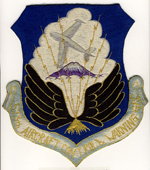
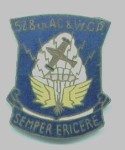
|
Aircraft Control & Warning Group
Constituted: 22 October 1941, as 31st Aircraft Interceptor Control Squadron
Activated: 1 January 1942, Payne Field, Washington
Located: 25 February
1942, Brisbane, Australia
Located: 8 March 1942, Melbourne, Australia
Located: 8 March 1942, Ballarat Victoria, Australia
Located: 17 March 1942, Mount Gambier, Australia
Located: 28 March 1942, Bankstown, Australia
Redesignated: 15 May 1942, 31st Fighter Control Squadron
Redesignated: 23 May 1942, 35th Fighter Control Squadron
Located: 28 May 1942, Sydney, Australia
Located: 1 August 1942, Port Moresby, New Guinea
Located: 1 August 1943, Tsili Tsili, New Guinea
Located: 15 October 1943, Nadzeb, New Guinea
Located: 23 June 1944, Lae, New Guinea
Located: 8 July 1944, Nooeemfor Island
Located: 14 January 1945, Lingayes Gulf, Philippine Islands
Located: 10 July 1945, Bamban, Luzon, Philippine Islands
Located: 15 October 1945, Subic Bay, Philippine Islands
Located: 25 October 1945, Sasebo, Kyushu, Japan
Located: 27 October 1945, Fukouka, Kyushu, Japan
Located: 4 November 1945, Saitozaki, Kyushu, Japan
Located: Early 1946, Fukuoka Area, Japan
Located: 25 March 1946, Tokyo, Japan
Located: 15 April 1947, Shiroi Auxiliary AB, Japan
Located: 1 December 1949, Johnson AB, Japan
Located:1 April 1950, Yokota AB, Japan
Located: 14 October 1950-15 March 1955, Johnson AB, Japan
Redesignated: July 15, 1946 528th Aircraft Control and Warning Group at Shiroi Air Base, Japan.
Note: Replaced part of 527th AC&W Group for Central Japan Squadrons
Note: 1946, participated in amphibious training maneuvers 17 and 18 October 1946, at Sagami Wan Beach, Japan
Subordinate Units: 1946, Located at:
Shiroi, Japan
Chitose, Japan
Shima, Japan
Mikage, Japan
Relocated: 1947, without personnel and equipment to Shiroi Army Air Base near Tokyo, Japan (IRIS Ref B0723)
Mission: 1948, Provide micro-wave Early Warning for islands of Honshu and Hokkaido, to provide navigational aid to friendly aircraft and Tactical Control of combat aircraft.
Subordinate Squadrons:
611th AC&W Sq Shiroi AB, Japan
620th AC&W Sq Shiroi AB, Japan (activated 1 Aug 1946 - Deactivated 15 Mar 1955)
621st AC&W Sq Niigata AB (? -Transferred 1955), Sado Shima AS (1955-Deactivated 5 Jan 1958)
Mission: 1950, To provide Early Warning and AIrcraft Control for Central Japan Air Defense Area.
Subordinate to: 1950, 35th Fighter Interceptor Wing
Mission: 1954, To support 41st Air Division (Defense) and 5th Air Force.
Note: Group was to be inactivated and concurrently a non TO&E (Table of Organization and Equipment) and unit designated 6028th Aircraft Control and Warning Group was to be established effective 8 October 1954. Group was simply reorganized in its former status instead.
Note: Participated in Project Native Son, the replacing of American Airmen with Japanese civilians, and Project Cherry Blossom, the ultimate goal of establishing Japanese Air Self Defense Force.
Commanders:
1949, Colonel Lawrence C. Coddington
1950, Lt. Colonel Theodore C. Hoffman
1950, 1951, Colonel Lamont Saxton and Capt. D.G. Henderdon was the Adjutant.
Note: Involved in planning and progress of Japanese Defense Force Radar Installation Program code named Airtight.
Deactivated: March 15, 1955
Disbanded: 21 September 1984
Awards and Decorations:
Service Streamers: Korean War.
Campaign Streamers: World War II: East Indies; Luzon; New Guinea; Papau.
Decorations: Philippine Republic Presidential Unit Citation: 7 Dec 1941-10 May 1942; 17 Oct 1944-4 Jul 1945.
Air Strike Control Team School
Operational: 1946, at Satsuma Air Base, Japan
Detachment 4
1951/52
Detachment 10
Located: 1951, Aikawa
Detachment 12
Located: Sakata (Niagata)
Notes: Directly opposite Det 24,on West Coast
Detachment 38
Equipment: SCR-270
Notes: South of Det 24;
Detachment 47
G.C.I.
Located: Chiba Peninsula, S.E. side of Tokyo Bay
|
|
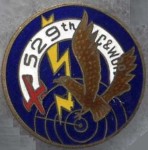 |
Aircraft Control & Warning Group
1941 - 1953
Organized: Bradley Field, Windsor Locks, Connecticut
Note: Served on Hawaii, Guam and Iwo Jima in WWII.
Located: 1946, Northwest Army Air Base, Guam, Marianas Islands
Original Designation: 302nd Fighter Control Squadron
Redesignated: 529th AC&WG 18 July, 1946
Mission: Provide Early Warning for the Air Defense of Okinawa
Manning: 36 Enlisted, 6 Officer
Relocated: 1 May 1947, Harmon Army Air Base, Guam, Marianas Islands
Located: 1949, Naha Air Force Base, Ryukyu Islands
Relocated: 1952 Group
Hq, along with the 851st AC&W Squadron relocated to Naha Air Base south of Kadena Air
Base.
Subordinate Units:
622nd AC&WS effective 18 July, 1946
623rd AC&WS
624th AC&WS effective 29 July, 1946
Notes: All personnel transferred to the 618th AC&WS effective 20 January, 1947, and 527th AC&WG was reduced to Zero strength on 20 January, 1947 at Florida Blanca Army Air Base.
Activated: 12 August 1948
Subordinate to: 51st Fighter Wing
Mission: Operate Tactical Control Center on Yontan Mountain and Air Defense Control Center on Okinawa at Stilwell Park, Kadena Air Base, Japan.
Relocated: 1948, Okinawa, Japan
Subordinate to: 1 April 1949, 20th Air Force
Located: 1949, Bisha Gawa Area, Okinawa, Ryukyu retto
Subordinate Units: 1951,
3rd Radar Calibration Flight
623rd Aircraft Control and Warning Squadron
624th Aircraft Control and Warning Squadron
Relocated: 30 July 1952, Naha, Okinawa, Japan
Subordinate to: 30 July 1954, 51st Fighter Interceptor Wing, Naha Air Base, Okinawa (less 623rd and 624th AC&W Squadrons)
Subordinate to: 24 February 1955, 5th Air Force
Subordinate to: 1 March 1955, 313th Air Division
Inactivated: 15 March 1955
|
| 530th |
| |
Aircraft Control and Warning Group
Located: 1947/48, Howard Field, Canal Zone, Panama
Stations 4, 5, 10, 45, 47, 63, 64, 65
Note: Ref IRIS 00899476
|
|
 |
Aircraft Control & Warning Group
Activated: 25 June 1948, McChord Air Force Base, Washington, training.
Note: June 1948, 626th Aircraft Control and Warning Squadron assigned as a Squadron of the 531st Aircraft Control and Warning Group, McChord Air Force Base, Washington.
Note: 6 December 1948, the Group was to take control of 505th Group Detachments at Neah Bay, Bohokus Peak and Pacific Beach. The purpose of this transfer was to enable the 531st Group to give training to its personnel. See 635th Aircraft Control and Warning Squadron for more details.
Relocated: July 1949, Port of Whittier, Alaska
Subordinate Units: 1949, Located at:
Ladd Air Force Base, Alaska
Clear, Alaska
Galena, Alaska
Nome, Alaska
Naknek, Alaska
Gamble Point, Alaska
Saint Lawrence Island, Alaska
Mission: 1951, Provide Ground Observer Network over Southern Alaska
Note: 1951, Operated Ground Controlled Interception stations at Elmendorf Air Force Base, Naknek Air Force Base and Farewell, Alaska. Operated Early Warning sites at Bethel, Kenai, and Willow, Alaska.
Reorganized: 8 July 1981, as 11th Tactical Control Group
Neah Bay
Note: 6 December 1948, 531st Group would take over Neah Bay, Washington
Note: 7 February 1949, operations stopped due to a fire which seriously damaged the AN/TPS-1B and destroyed the major part of the AN/TPS-10A.
Note: 29 March 1949, Detachment returned to 635th Squadron from 531st Group.
See: 505th Group for additional information
Equipment:
1949,
AN/TPS-1B
1949, AN/TPS-10A
Pacific Beach
Note: 6 December 1948, 531st Group would take over Pacific Beach, Washington
Note: 29 March 1949, Detachment returned to 635th Squadron from 531st Group.
See: 505th Group for additional information
Pasco Air Defense Direction Center
Note: 7 December 1948, 531st Group would take over the Pasco ADDC from the 637th Aircraft Control and Warning Squadron, 505th Aircraft Control and Warning Group.
Exercises:
1979
Amalgam 79-4
Fencing Brave 79-2
1981
Fencing Virgo 81-10
Vigilant Overview 81-3
|
|
| |
Tactical Control Group
Note: Previously designated 151st Tactical Control Group
Located: Otis Air Base, Massachusetts
Subordinate Units: 1953/1954
617th Aircraft Control and Warning Squadron
617th Tactical Control Squadron
622nd Aircraft Control and Warning Squadron
630th Aircraft Control and Warning Squadron
643rd Aircraft Control and Warning Squadron
Exercises:
1953/1954
Briefcase
Broadjump
|
| |
Aircraft Control & Warning Group (Mobile)
Transferred, Redesignated and Reorganized: from ADC from TAC February 1954
Inactivated: August 1954
|
|
| |
Aircraft Control & Warning Group
Activated: 20 November 1948, Orlando Air Force Base, Florida
Note: Established as the first postwar school to train Aircraft Control and Warning Teams. Training with AN/CPS-5 and AN/TPS-10 radar sets.
Equipment: AN/CPS-6, AN/CPS-6B, AN/CPS-1, AN/CPS-5, AN/CPS-4, AN/TPS-1B, AN/TPS-10
AN/TPS-2, and SCR-720
Inactivated: 1 October 1949
|
|
| |
Aircraft Control & Warning Group
Activated: 8 December 1949, Selfridge Air Force Base, Michigan
Assigned: Stewart AFB, New York 1 January 1951
Inactivated: 6 February 1952
|
|
| |
Aircraft Control & Warning Group
Activated: 15 March 1950, Selfridge Air Force Base, Michigan
Inactivated: 6 February 1952
|
| |
Aircraft Control & Warning Squadron
|
|
| |
Aircraft Control & Warning Group
Activated: 8 December 1949, Constituted and Activated, Hamilton Field, California
Assigned: Hamilton AFB, California 1 January 1951
Subordinate Units: Activated: 1 May 1950
666th Aircraft Control and Warning Squadron
668th Aircraft Control and Warning Squadron
669th Aircraft Control and Warning Squadron
670th Aircraft Control and Warning Squadron
Inactivated: 6 February 1952
|
|
| |
Aircraft Control & Warning Group
Assigned: Ft. Snelling, Minnesota 1 January 1951
Inactivated: 6 February 1952
|
|
| |
Aircraft Control & Warning Group
Assigned: Norton AFB, California 1 January 1951
Inactivated: 6 February 1952
|
|
| |
Aircraft Control & Warning Group
Activated: 1 March 1951 at
Great Falls AFB, Montana
Inactivated: 6 February 1952
|
|
| |
Aircraft Control & Warning Group
Activated: 19 March 1951 at
Tinker AFB, Oklahoma
Discontinued: 4 June 1951
|
| 548th |
| |
Aircraft Control and Warning Group
Located: Ladd Air Force Base, Alaska
Commanders:
February 1953 - May 1953, Stephen B. Mack
|
| 549th |
| |
Aircraft Control and Warning Group
Activated: 8 October 1952
Note: 1952, Personnel and equipment from 154th Aircraft Control and Warning Group
Located: 1952, Sale, French Morocco
Subordinate to: 5th Air Division
Mission: 1952, Provide Aircraft Control and Warning to 5th Air Division.
Subordinate Units: 1952
734th Aircraft Control and Warning Squadron
735th Aircraft Control and Warning Squadron
736th Aircraft Control and Warning Squadron
737th Aircraft Control and Warning Squadron
Commanders:
1953, Lt. Colonel Charles C. Woolwine
25 May 1953 - (?), Colonel John R. Kane
|
|
|
|
|